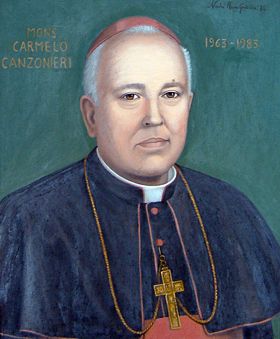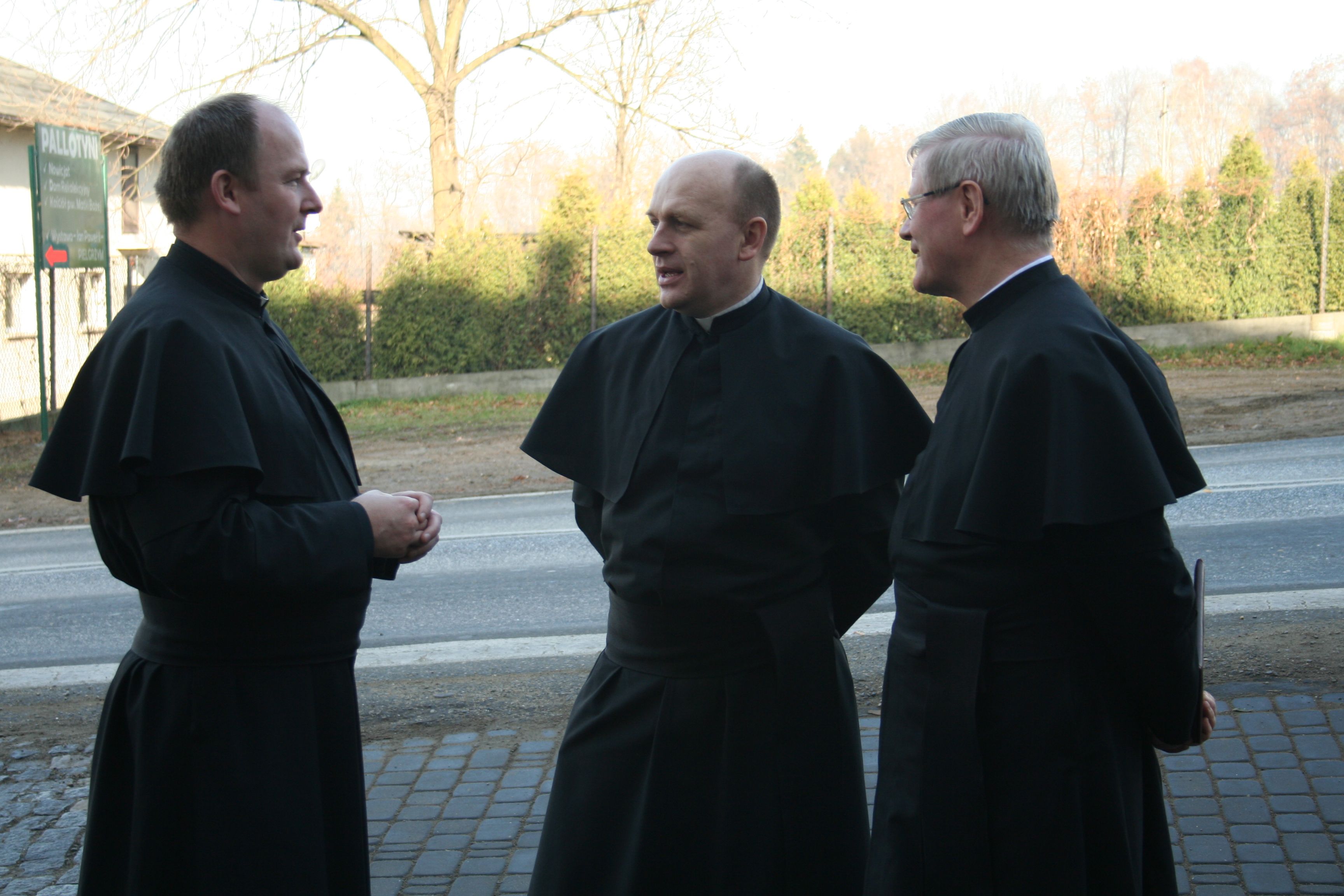pellegrina on:
[Wikipedia]
[Google]
[Amazon]
 The pellegrina is a
The pellegrina is a
 The general rule of the Roman Catholic Church is that the pellegrina may be worn with the
The general rule of the Roman Catholic Church is that the pellegrina may be worn with the
/ref> In 1850, the year in which In his 1909 book, ''Costume of Prelates of the Catholic Church'', John Abel Felix Prosper Nainf
In his 1909 book, ''Costume of Prelates of the Catholic Church'', John Abel Felix Prosper Nainf
proposed
the use of the English word "
/ref> More particularly, the documents of theCindy Wooden, "Pope Benedict to be 'Pope emeritus' or 'Roman pontiff emeritus'", ''Catholic News Service''
/ref>
 The pellegrina is a
The pellegrina is a cape
A cape is a clothing accessory or a sleeveless outer garment which drapes the wearer's back, arms, and chest, and connects at the neck.
History
Capes were common in medieval Europe, especially when combined with a hood in the chaperon. T ...
-like item of clerical dress worn by some Catholic
The Catholic Church, also known as the Roman Catholic Church, is the largest Christian church, with 1.3 billion baptized Catholics worldwide . It is among the world's oldest and largest international institutions, and has played a ...
ecclesiastics.
Description
Similar to themozzetta
The mozzetta (, plural ''mozzette''; derived from almuce) is a short elbow-length sartorial vestment, a cape that covers the shoulders and is buttoned over the frontal breast area. It is worn over the rochet or cotta as part of choir dress by s ...
but open in front, the pellegrina is a short shoulder cape reaching to the elbow. It is made of black or white material trimmed and lined with amaranth red (for bishops) or scarlet red (for cardinals). The pope
The pope ( la, papa, from el, πάππας, translit=pappas, 'father'), also known as supreme pontiff ( or ), Roman pontiff () or sovereign pontiff, is the bishop of Rome (or historically the patriarch of Rome), head of the worldwide Cathol ...
's pellegrina is entirely white. In some countries, priests wear a pellegrina of the same colour as their plain black cassock.
Use
 The general rule of the Roman Catholic Church is that the pellegrina may be worn with the
The general rule of the Roman Catholic Church is that the pellegrina may be worn with the cassock
The cassock or soutane is a Christian clerical clothing coat used by the clergy and male religious of the Oriental Orthodox Churches, Eastern Orthodox Church and the Catholic Church, in addition to some clergy in certain Protestant denominat ...
by cardinals and bishops.Instruction ''Ut sive sollicite'' on the Dress, Titles and Coats-of-Arms of Cardinals, Bishops and Lesser Prelates, 28 March 1969, 2 and 14/ref> In 1850, the year in which
Pope Pius IX
Pope Pius IX ( it, Pio IX, ''Pio Nono''; born Giovanni Maria Mastai Ferretti; 13 May 1792 – 7 February 1878) was head of the Catholic Church from 1846 to 1878, the longest verified papal reign. He was notable for convoking the First Vatican ...
restored the Catholic hierarchy in England and Wales, he was understood to grant to all priests there the privilege of wearing a replica in black of his own white cassock with pellegrina. Since then, the wearing of the pellegrina with the cassock has been a sign of a Catholic priest in England and Wales, Scotland, Ireland, Australia, and New Zealand.
 In his 1909 book, ''Costume of Prelates of the Catholic Church'', John Abel Felix Prosper Nainf
In his 1909 book, ''Costume of Prelates of the Catholic Church'', John Abel Felix Prosper Nainfproposed
the use of the English word "
simar
A simar, as defined in the 1913 ''Webster's Dictionary'', is "a woman's long dress or robe; also light covering; a scarf." The word is derived from French simarre, and is also written as cimar, cymar, samare, and simare. Background
''Collins En ...
", instead of the word "cassock", for the garment with shoulder cape, which he treated as distinct from the cassock proper. Others too have made the same distinction between the "simar" (with pellegrina) and the "cassock" (without), but many scholars disagree with Nainfa's distinction.Edward McNamara, "Birettas and Academic Hats at Mass"/ref> More particularly, the documents of the
Holy See
The Holy See ( lat, Sancta Sedes, ; it, Santa Sede ), also called the See of Rome, Petrine See or Apostolic See, is the jurisdiction of the Pope in his role as the bishop of Rome. It includes the apostolic episcopal see of the Diocese of Rome ...
make no such distinction, using the term "cassock" or "vestis talaris" whether a pellegrina is attached or is not. Thus the 1969 Instruction states that, for cardinals and bishops, "the elbow-length cape, trimmed in the same manner as this ''cassock'', may be worn over it". "Cassock", rather than "simar" is the term that is usually applied to the dress of Popes and other Catholic ecclesiastics. The Instruction also gives no support to Nainfa's claim that the cassock with shoulder cape should not be worn in church services, which would be of difficult application, since the cassock with pellegrina is generally made as a single garment, with a non-detachable pellegrina.
When Pope Benedict XVI retired in 2013, he decided that he would continue to wear a white cassock but without pellegrina./ref>
Origin of the name
The pellegrina owes its name to its similarity to a more ample shoulder cape of cloth or leather that was traditionally worn by pilgrims (''pellegrini'' inItalian
Italian(s) may refer to:
* Anything of, from, or related to the people of Italy over the centuries
** Italians, an ethnic group or simply a citizen of the Italian Republic or Italian Kingdom
** Italian language, a Romance language
*** Regional It ...
).
References
{{Clothing History of clothing (Western fashion) Robes and cloaks Catholic clerical clothing